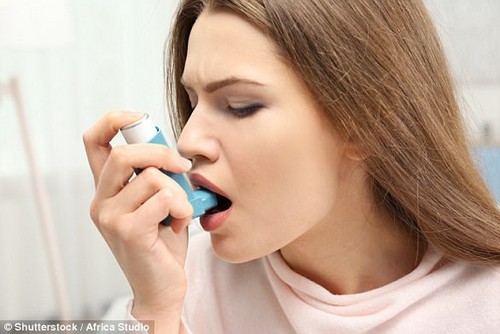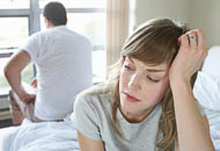But while it may seem like a common cold, there could be another reason you may be completely oblivious to. It’s the time of year when it seems inevitable you’ll be struck down with the dreaded sniffles and sneezes at some point.
Instead ‘house fever’ – in other words being allergic to your own home – could be the actual cause of that that runny nose, say experts. It follows a warning that Christmas trees could also be life-threatening for people with asthma by triggering a severe attack.
Similar to hayfever in the summer, an allergic reaction to your home can cause constant sneezing, a stuffy and dripping nose and itchy, watery eyes. According to Max Wiseberg, creator of HayMax allergen barrier, as many as 12 million people in the UK could be affected.
The hayfever sufferer said he noticed his symptoms were refusing to shift even when the temperatures dropped.

Every Christmas Day almost 300 people in the UK are admitted to hospital with a serious asthma attack, research reveals (stock photo)
He said: ‘Currently around one in five people suffer with hay fever in the UK and NHS Choices report that indoor allergies are very common and that around ten to 20 per cent of the population has an indoor allergy,’ he said.
‘And we can’t even escape it at Christmas time as the mould, pollen and dust collecting on our Christmas tree can trigger symptoms.’
WHAT IS CHRISTMAS TREE SYNDROME?
Every Christmas Day almost 300 people in the UK are admitted to hospital with a serious asthma attack, according to Asthma UK.
The fir harbours mould, which can multiply in the warm temperatures of your living room and aggravate the lungs of sufferers of the condition.
And fake trees are not necessarily a safe bet either, because they can gathering dust and mould while they’ve been stored in the loft, and this can cause breathing problems.
A US study suggests there has been a rise in respiratory illnesses – dubbed Christmas tree syndrome – in the weeks before and after December 25.

The fir on Christmas trees harbours mould, which can multiply in the warm temperatures and aggravate the lungs of sufferers of the condition (stock photo)
Upstate Medical University in New York discovered 53 different types of mould on 28 different Christmas trees and say most of the moulds identified are potential allergens.
Their research suggests airborne mould spores could multiply from 800 spores per cubic metre to 5,000 in just two weeks after a tree is brought into the home.
Asthma UK has suggested the following guidelines…
Real Christmas trees
- Hose down your real tree before you bring it into the house. This will help to wash off the allergens.
- Keep the tree in the coolest part of the house.
- If you notice any symptoms, get rid of the tree straight away.
Artificial trees
- Wipe down your artificial tree and decorations with a damp cloth to remove the dust.
- When you pack the tree and decorations away, use plastic bags and boxes so they’re less likely to collect dust.
Mr Wiseberg’s tips for beating allergies in the home:
1. Control the humidity
Keeping the humidity in your house to a minimum will help control potential allergens lingering in the house.
Dust mites and mould thrive in moist environments. You can use a dehumidifier to help with this and avoid drying clothes on radiators.
2. Get the vacuum cleaner
Using a cleaner with a HEPA (high efficiency particle arresting) filter may help bring allergy relief.
Vacuum regularly, especially on beds and fabrics to reduce the number of dust mites, mold spores, pollen, and pet dander trapped in them.
Reactions to allergens like dust mites and mould in the home can cause constant sneezing, a runny nose and itchy eyes (stock photo)
3. Get damp dusting
Hoovering alone may not be enough to make a difference so get to work with a damp cloth to remove those allergens.
4. Wash your bedding regularly
If you really suffer with allergies, put dust-mite-proof covers on pillows, comforters, mattresses, and box springs.
Washing your bed sheets regularly can help too. Launder your blankets, sheets, and pillowcases every week in water that is at least 130 F.
5. Use an allergen barrier balm
Apply an organic drug-free allergen barrier balm such around your nostrils and the bones of the eyes in the morning, throughout the day and at night to trap dust, pet and mould allergens before they enter the body.
6. Shower before bed
Shower at night before going to bed, to remove dust and pet allergens from your hair and body.
7. Keep pets out of the bedroom
Ensure your pet is well groomed and shampooed as much as possible to remove pet allergens and dust particles, and try to keep pets out of bedrooms.



